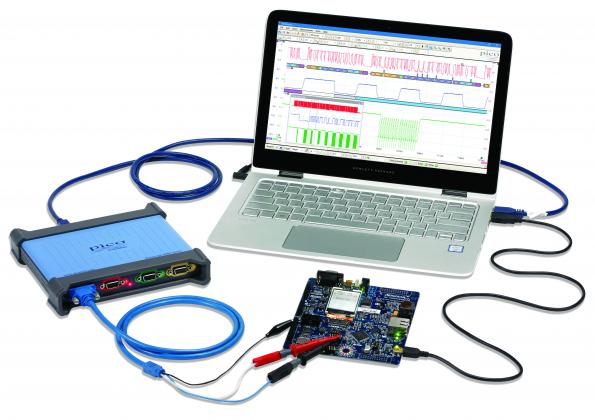Drivers Pico
As for the Raspberry Pi Pico itself, it pairs the RP2040 with 2MB of flash memory and a power supply chip supporting input voltages ranging from 1.8v to 5.5v. There's also a single push button. Based on Wireless N technology with a single antenna, the Wireless N 150 Pico USB Adapter achieves wireless speeds of up to 150 Mbps and extended coverage with fewer dead spots. It is the ideal upgrade for 802.11g notebooks or PCs and it is compatible with newer Wireless N and widespread 802.11g technologies. The SDK allows you to write your own software and includes drivers for Windows, macOS and Linux (including beta versions for Raspberry Pi and Beaglebone). Example code, hosted on the Pico Technology GitHub pages, shows how to interface to third-party software packages such as Microsoft Excel, National Instruments LabVIEW and MathWorks MATLAB. Supplied drivers: 32 and 64-bit drivers for Windows 7, 8 and 10 Linux drivers macOS drivers: Example code: C, C#, Excel VBA, VB.NET, LabVIEW, MATLAB: Maximum USB streaming sampling rate. 1 MS/s: 5 MS/s: 31 MS/s: Buffer memory in USB streaming mode. Limited only by PC: Segmented memory buffers. N/A: 96: 128 000: 256 000: 512 000.
USB-SERIAL CH341 Drivers Download | Arduino Uno R3 Clone CH340 USB Driver
Picopix Drivers
Most new users find it difficult to get the USB drivers. Because Arduino Uno Clone does not use the same driver chip with Arduino Uno R3 Original. But don’t worry, Srishti Robotics have provided two drivers.

Use the USB / Serial CH340 / CH341 Driver‘s Download:
Windows 32 bit : Download
Windows 64 bit : Download
Linux : Download
Driver Pico
MAC : Download
USB Serial Driver CH 340 can be used for Windows XP / Win 7 / Wind 8. I try to use Windows 8.
If USB Serial Drivers are successful it will be visible in the Devices Manager of Windows
In a nutshell: The Raspberry Pi Pico utilizes a chip developed in house called the RP2040. According to hardware lead James Adams, they had three key goals when designing the chip: it had to exhibit impressive performance, have a flexible I/O for compatibility purposes and be cost efficient. Building on lessons learned from using other microcontrollers in their products, Raspberry seemingly accomplished its goals,
The Raspberry Pi foundation on Thursday announced its first microcontroller-class product.
The RP2040 package consists of the following:
- Dual-core Arm Cortex-M0+ @ 133MHz
- 264KB of on-chip RAM
- Support for up to 16MB of off-chip flash memory via dedicated QSPI bus
- DMA controller
- Interpolator and integer divider peripherals
- 30 GPIO pins, 4 of which can be used as analogue inputs
- 2 × UARTs, 2 × SPI controllers, and 2 × I2C controllers
- 16 × PWM channels
- 1 × USB 1.1 controller and PHY, with host and device support
- 8 × Raspberry Pi Programmable I/O (PIO) state machines
- USB mass-storage boot mode with UF2 support, for drag-and-drop programming
Drivers Pioneer Ddj Sz
As for the Raspberry Pi Pico itself, it pairs the RP2040 with 2MB of flash memory and a power supply chip supporting input voltages ranging from 1.8v to 5.5v. There's also a single push button that can be used as a general input and 26 of the 30 GPIO pins are exposed.
Picoscope Drivers
Like other Raspberry Pi devices, the Pico is affordable. Very affordable. You’ll pay just $4 if purchased individually, or if you opt for the latest copy of HackSpace magazine, you’ll get one bundled for free. They’re available to order as of writing from one of Raspberry Pi’s many approved resellers.
Picoboard Drivers
Now Read This…
Related Reads
Drivers Pictures
Product Finder scores
